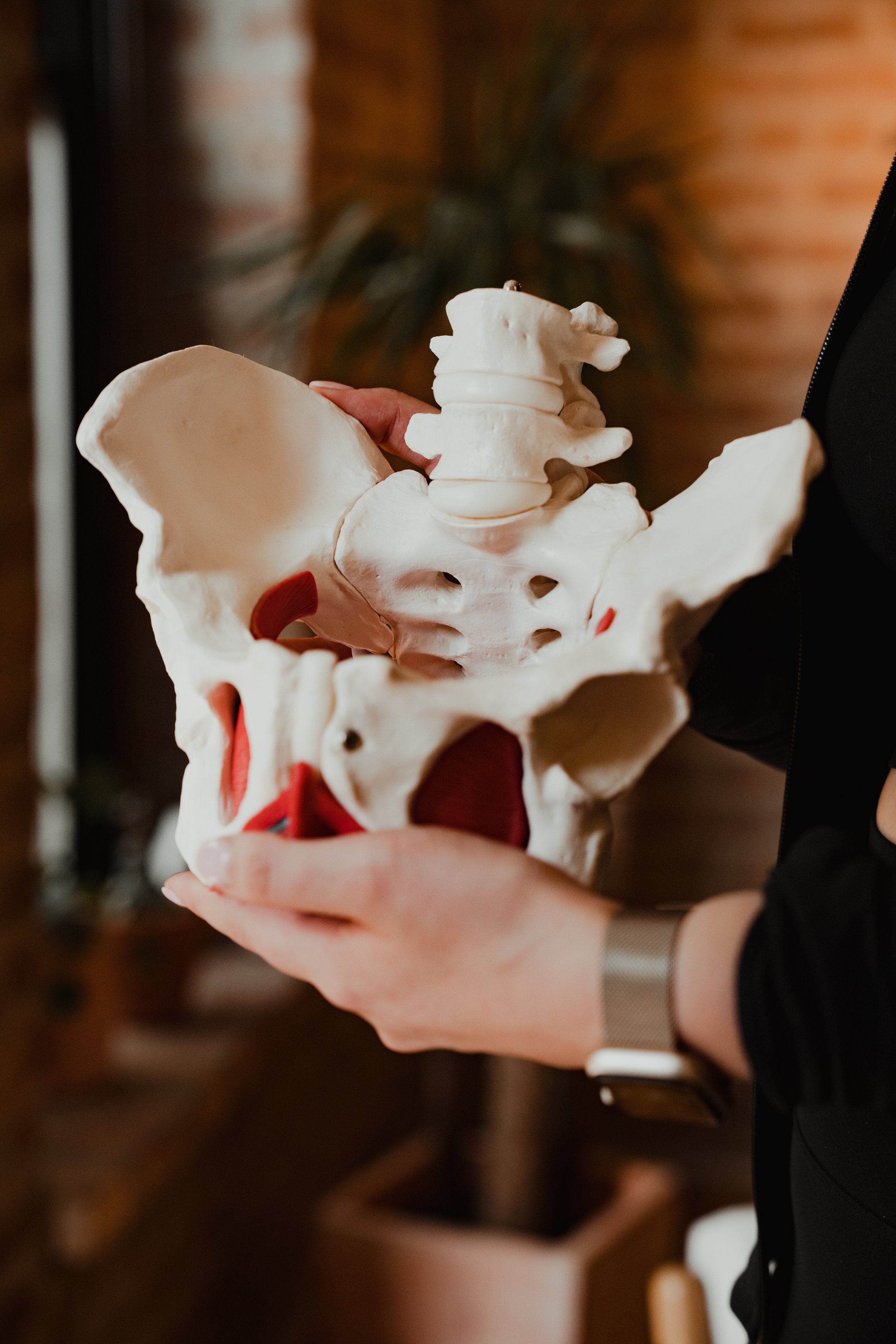
Pelvic Health
What is Pelvic Floor Physical Therapy?
Pelvic floor physical therapy aids in treating pelvic girdle pain, bowel and bladder symptoms, sexual dysfunction, postpartum pain/weakness, and more. At The Pelvic Institute, we have dedicated our mission to helping anyone struggling with pelvic floor dysfunction reclaim their confidence and restore their pelvic health. Learn more about the evidence supporting pelvic floor therapy in the treatment of pelvic floor dysfunction here.
Pelvic Floor Treatment Areas
-
Sacroiliac Joint Pain
Pubic symphysis pain
Pelvic and perineal pain
Coccyx pain
-
Painful intercourse
Pain with Climax
Vaginismus
-
Urinary urgency
Urinary Incontinence
Incomplete emptying
-
Fecal Urgency
Constipation
Fecal Incontinence
-
-
Uterine
Ovarian
Prostate
-
Cesarian scar
Axillary scars
Tissue limitations and pain due to scar tissue
-
Hip pain
Low back pain
Endometriosis
Abdominal wall pain
-
One key function of the pelvic floor is to act as a “sling” to support the bladder, uterus, and rectum. During pregnancy, the pelvic floor muscles can be stretched and weakened due to increased load and increased hormonal production, leading to pelvic floor dysfunction. Learn more about the essential functions of the pelvic floor here.
In addition to physical changes, there are common behavioral changes that occur during pregnancy that may impact pelvic floor function. For example, many may avoid drinking fluids or emptying their bladder frequently to avoid urinary leakage, which can actually worsen symptoms of incontinence. Pelvic floor therapy offers life-changing benefits to this population. Ways that pelvic floor therapy can help include:
Preparation for childbirth
Prevention of pelvic floor disorders
Recovery after childbirth
Improved sexual function
-
Athletes may benefit from pelvic floor therapy if they are experiencing pelvic girdle symptoms or conditions that are inhibiting their sport, such as urinary or fecal incontinence, pelvic pain, pelvic organ prolapse, postpartum recovery, and more. At The Pelvic Institute, Amanda has worked as a sports physical therapist as well as trainer for over 5 years, and has since grown passionate about helping these populations recover from pelvic floor dysfunction. Conditions commonly seen in athletes, such as runners and barbell athletes, that we treat include:
Stress urinary incontinence
Pelvic organ prolapse
Pelvic girdle pain
Dyspareunia (pain with intercourse)
Rectal prolapse
Treatment Pathway
Evaluation
During your 60-minute pelvic floor evaluation, your physical therapist will ask you questions regarding your concerns, and guide you through the physical examination. Once completed, your therapist will work with you to create achievable goals and a treatment plan.
Follow-up Visits
During your 60-minute follow-up visits, your therapist will implement the discussed strategies to address your symptoms and build upon self-management strategies each week. While treatment plans are a nice guide for both the patient and clinician, they can be modified at any time if something comes up or symptoms change.
Home Exercise Programs
While physical treatment is essential for reducing intense symptoms, getting hands-on care and supervision, most of the progress you make will actually be at home. We assign sustainable, tailored programs to our patients that will complement our treatment and provide the best outcomes for our patients. Exercise programs are digital and accessible online or via app.
Patient Education
Our number one priority will always be our patients, so we like to empower each and every one of them with the knowledge they need to maintain the progress they’ve made in treatment sessions and set them up for long-term success.
Your care is in expert hands.






FAQs
-
Illinois is a direct access state, meaning you do not need a referral to be seen by a physical therapist.
-
Both! Pelvic floor therapy can be beneficial in preparing women for delivery, as well as rebuilding strength and treating postpartum pain.
-
Yes! Menstruation is not a contraindication for internal work, so you can still attend your session. If you are uncomfortable with internal work during this time, there are plenty of other things that we can work on during your session.
Testimonial
"Amanda is very patient, thoughtful and a great listener. Her approach to physical therapy and style always makes me feel comfortable. I trust that the back, hip and pelvic floor movements we work on together will continue to speed up my recovery. Amanda is incredibly flexible and will pivot the session if it is not working with my body issues on any given day. Grateful that I was connected to Amanda!"
-Randi J.






